It has been, and still is, one of D-Day’s most recurring hypothetical scenario, for historians and wargamers’ alike: ‘what if’ the Germans had unleashed their Panzers against the Allied beachhead on the very first hours of June 6th?
And in each and every such scenario, the main German protagonist for such a swift counter-offensive, the one division on which shoulders all of Germany’s hopes rested on, was the strangest collection of equipment ever seen in a Panzerdivision: the 21. Panzer.
‘PANZER ROLLEN IN AFRIKA VOR …’
The original 21. Panzerdivision can trace its origins to the 5. Leichte Division, an ad hoc battlegroup made up of elements from 3. Panzerdivision and other detachments hastily dispatched to Libya, then an Italian colony, to help Mussolini’s troops repel the British after the disastrous battle of Beda Fomm. Barely two weeks following its arrival in Africa, the 5. Leichte went on the offensive under Rommel’s leadership, initiating a series of victories over the British Army which drove the Axis from Tripoli to Tobruk in just two months.
On August 1st, 1941, the 5. Leichte Division is converted into the 21. Panzerdivision. From then on, its fame will be inseparable from that of Rommel’s legendary Deutsches Afrika Korps (DAK), being present for all its battles: Tobruk, Marsa Maruth, Gazala, Bir Hakeim, Mersa Matruh, First El Alamein, … It will share its fate too: after the Second Battle of El Alamein, in late 1942, reduced to four tanks and its commander killed, the 21. Panzer retreated toward Tunisia with the DAK.
There, what was left of the division was reorganized with some reinforcements into a Kampfgruppe (battlegroup), which was soon engaged against the Americans at Kasserine Pass. Although a shadow of its former self, the battle-hardened 21. Panzer inflicted the still inexperienced Americans a major defeat, yet one Rommel couldn’t exploit due to lack of troops. Soon, the fast recovering Americans & French troops from Algeria, and the British & Commonwealth troops from Libya, were on the offensive again. What remained of the first 21. Panzerdivision, trapped around Tunis, surrendered on May 13th, 1943.
RISING FROM ITS ASHES
On July 15th, 1943, 21. Panzerdivision was recreated in Rennes (France), using Schnelle-Brigade 931 (or West) as its basis and with all surviving personnel from the original division: wounded men whom had been evacuated before the showdown in Afrika, soldiers on leave at the time, etc… Still, with everyone accounted for, the latter were left with less than a 1.000 in fighting condition.
For almost a year, under command of Generalmajor Edgar Feuchtinger, 21. Panzer would reorganize and train new personnel to be brought back to a truly Panzerdivision status. On April 26th, 1944, it was moved to Caen and received its new mission: readily await to counter-strike at a moment’s notice any Allied landing in the sector.
It was just a mere month before D-Day, and 21. Panzerdivision was hardly ready for that mission. Under-equipped, with old Panzer 35S(f) (French Somua tanks from 1940 used as training machines) still accounting for one third of its tank fleet on June 1st, and a few obsolete Panzer III & short-barreled Panzer IV could still to be found among the regular long-barreled Panzer IV.
Another issue was its commander, Edgar Feuchtinger. As organizer of the military portion of the Nuremberg rallies before the war, he had displayed great talents ingratiating himself with the higher circles of the Nazi party, and he owed to those connections to have received command of a prestigious Panzerdivision despite having built his entiere career within the artillery, and knew nothing about mechanized warfare. A socialite, Feuchtinger would spend as much time as possible in Paris or other major cities instead of his headquarters, letting his subordinates running the division in his place. As a matter of fact, during the fateful night of June 5-6th, he had slipped to Paris without telling anyone, for a night in Parisian clubs with his mistress. When news of the airborne landings reached his HQ, Feuchtinger could not be found until the morning …
BECKER’S FUNNIES
But 21. Panzerdivision had assets of its own. One of Feuchtinger’s quality was to realize he needed good subordinates to compensate his own lack of experience in armored warfare, hence he used his connections again to get very good regimental commanders under his command, experts in armored warfare such as von Luck and von Oppeln-B., … Those were the officers really in charge of training and organizing the division.
Another asset was the unsung genius Major Alfred Becker. A civilian engineer and WW1 reserve officer, he was called back in service in the artillery to serve during the campaigns in France & the Netherlands. His unit (then 227. Infanterie-Division) staying in France as part of the occupation force, he started collecting British equipment abandoned at Dunkirk and converted them into self-propelled guns with the addition of howitzers or anti-tank guns. After a short tour in Russia, he set a workshop in France in 1942 and started converting French vehicles into SPGs. The German army owes his craftsmanship many famous vehicles: Hummel, Wespe, Marder I, Lorraine-based carriers, etc…
In 1943-44, now a Major, he will refurbish the 21. Panzerdivision with hundreds of his vehicles: but in the recon battalion, all armored personnel carriers were modified French Unic P107, as well as all the specialized versions: anti-aircraft, mortar, command, anti-tank, etc… Self-propelled guns are all based on French Lorraine & Hotchkiss chassis, and artillery observation vehicles on the H-38 tank. Unique vehicles built from the Somua MGC half-track were added to the division’s armory: MLRS, multi-mortars, and even a self-propelled PaK 40 months before the first SdKfz 251/22.
Dubbed Rommel’s Zirkus because of its motley assortment of vehicles, 21. Panzer was at the same time under-equipped yet more mechanized than most of its sister Panzerdivisionen, thanks for Becker’s SPG and half-tracks which it had in greatest numbers. Major Becker took command of the division’s StuG battalion himself, and into action in Normandy.
D-DAY AND THE NORMANDY CAMPAIGN
On the June 5-6th’s night, British paratroopers landed in 21. Panzer’s perimeter. But due to Feuchtinger’s disappearance, the division didn’t move immediately. Only late in the morning did the latter hurried back to his HQ and, refusing to coordinate with his neighbor and superior general Erich Marks (reputedly the only senior German officer whom had anticipated and warned against an Allied landing in Normandy), launched an attack against the paratroopers instead of the British beachhead, as Marcks suggested. Yet, unable to concentrate all his division, he attacked erratically … and failed. Meanwhile, one of the 21. Panzer‘s regimental commander, Oberst Joseph Rauch, had counter-attacked on his own against the beachhead and even reached the sea, effectively separating the British from the Canadians. But without any support, and with more paratroopers landing behind him, Rauch had to order a retreat.
From then on, Feuchtinger is said to have “allowed his subordinate commanders a great deal of latitude“, others commented that he left them completely to fend for themselves. 21. Panzerdivision remained operational as long as possible by absorbing the remnants of destroyed units, and fought all Summer to prevent the Allies from capturing Caen. It was ultimately destroyed in the Falaise pocket, losing all its vehicles and all but 300 personnel … although Feuchtinger himself had managed to escape earlier.
WHAT IS DEAD MAY NEVER DIE
Once again rebuilt, 21. Panzerdivision was engaged during the battle of the Bulge, to be, once again, decimated. Pulled back, it was hurried on the Eastern Front where it surrendered to the Red Army on April 29th, 1945.
As for Feuchtinger, still the division’s commander at the outbreak of the battle of the Bulge, he was arrested on Christmas Eve for being away from his post without leave, as well as several embezzlement charges. Stripped of all ranks & awards and condemned to death, he was pardoned by Hitler himself and sent back to the front as a Kanonier (artillery private) … but immediately deserted, hid and surrendered to the Americans as a general, passing himself as a victim of the Nazis. Later, after the war, he would be coerced by the KGB into spying for the Soviet Union until his death in 1960.
THE 21. PANZERDIVISION INGAME
Note: On June 1st, 1944, 21. Panzer still had one third of its Panzer-Regiment equipped with French Somua tanks. Yet, there is no historical evidences that those were ever actually used in combat: their crews were hastily sent to the rear to receive new Panzer IV before going back to combat. For gameplay and diversity reasons, we have chosen to represent the division as it was on June 1st, had it engaged the Allies with everything it had, including its obsolete Somua tanks.
21. Panzer is the panzer equivalent of a light cavalry division, immediately unleashed on the Allies. With plenty of old French cavalry tanks at its disposal, it is very strong in phase A: the Panzer 35S(f) (a.k.a Somua) might be obsolete by 1944’s standards, but when faced only with Stuarts or other light tanks, it can give the best of itself.
21. Panzer can also rely on a wide array of specialized and unique vehicle, such as the S307(f) R-Vielfachwerfer MLRS, the odd S307(f) Reihenwerfer with its sixteen combined mortar tubes, and the deadly S307(f) PaK, a self-propelled PaK 40. All much-needed assets to survive through phase B which, with its Panzer IV as best tanks, isn’t when 21. Panzer is at its best …
Things tend to get a bit better with phase C, and the welcome reinforcement of some tank-borne heavy rocket launcher Wurfrahmen 35H(f), or a handful of Königstiger from s.Panzer-Abteilung 503.
Bonus feature: German newsreel about Rommel reviewing the 21. Panzer and its strange vehicles on May 8th, 1944, one month before D-Day.

![Advance_of_the_Panzerjager-Abteilung_39-AC1942[1]](https://eugensystems.com/wp-content/uploads/2017/03/Advance_of_the_Panzerjager-Abteilung_39-AC19421-300x189.jpg)
![M-Kasserine-2-HT[1]](https://eugensystems.com/wp-content/uploads/2017/03/M-Kasserine-2-HT1.jpg)
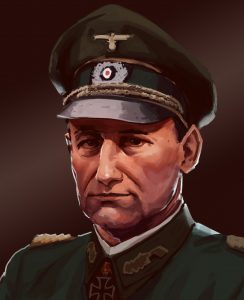
![Becker,_Rommel_and_Feuchtinger[1]](https://eugensystems.com/wp-content/uploads/2017/03/Becker_Rommel_and_Feuchtinger1.jpg)
![21-Panzer-03[1]](https://eugensystems.com/wp-content/uploads/2017/03/21-Panzer-031.jpg)
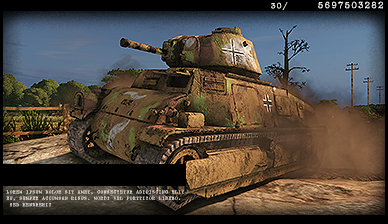
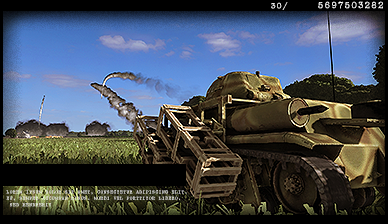
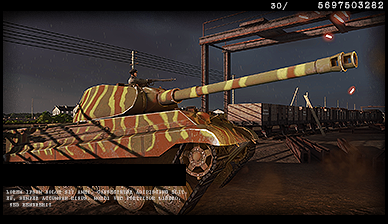
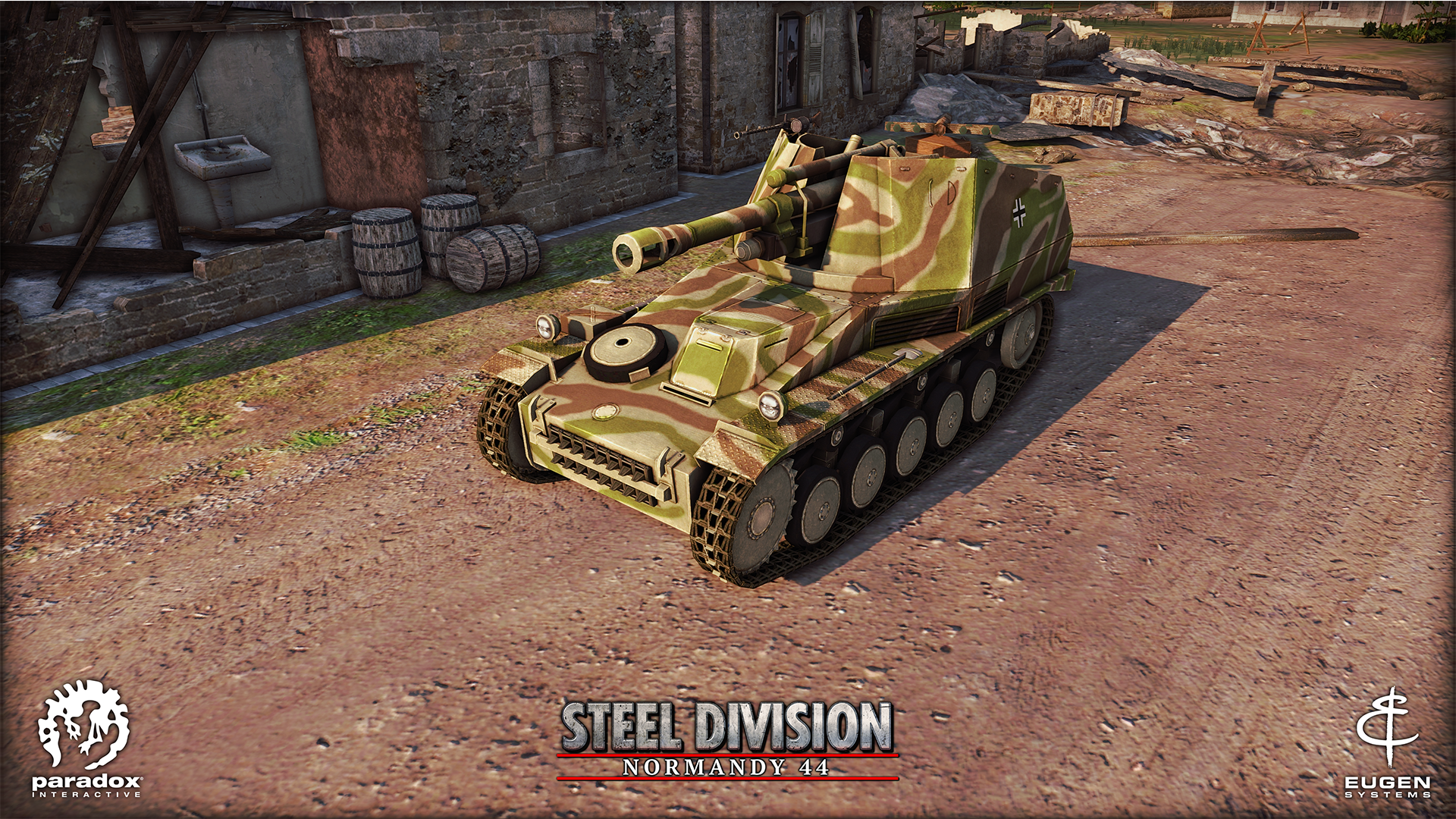
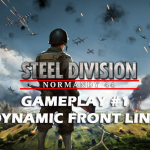
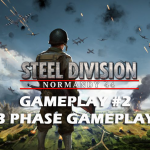
Ragga
March 23, 2017 at 5:52 pmAwesome… I’m really enjoying these history lessons ?
DasaKamov
March 29, 2017 at 11:38 pm@Sir Wanksalot:
The Somua conversions aren’t “A” units because of their agility or rapid response; they’re in that category because they’re the “oh crap the yankees are coming; we need something – ANYTHING – to provide armored support until we can mobilize our PzKmpf IVs to the battle”.
As second-line and trainer vehicles, it makes sense to me that the Allies won’t find anything more advanced than obsolete Feench tanks from the 1930s facing them, in the initial stages of the battle.
Wank
April 2, 2017 at 12:53 amThis is speaking from a encounter style engagement, which is the most logical for armored divisions. For guards and occupation battalions, or if a mechanized battery was attacked it would be more defensive so this doesn’t apply as much.
Why would German units send tanks like that to the slaughter, that sound like a waste of valuable crew members. How would they even arrive in time, or be in a position for immediate mobilization? If these are second line vehicles, how can they possibly be ready before the regular tanks? I sincerely doubt the S35’s were kept combat ready. If Germany had a competent military force, and I would argue they did, they would focus on deploying more usefull units that would give them an upper hand.
Michel
March 24, 2017 at 2:52 pmThank you for these detailed lessons! They are very nice appetizers!
Sir_Wanksalot-
March 27, 2017 at 7:46 amThe logic behind the A B C tiers is that obviously an entire division won’t arrive at the same time, and some units will be scouts and the spearhead, while others will arive later because they are slow, need logistics, and are reserve. This makes perfect sense to me, and I would be happy with it…. if the logic was consistent throughout all units.
Then you break your own logic by allowing the Panzer 35s to arrive as an A card, when it is very slow, needs it’s own special logistics, and is a reserve vehicle? Why would a German mechanized unit built for mobility spearhead their attack with slow pieces of outdated crap? Yes the 21. was slim on vehicle choices, but logic dictates the 35s would have been kept in reserve until they are truly desperate.
If you wanted the give the 21. their own flavor, you could have did it without sacrificing your games internal logic. Make the 35s a B or C card, use it to supplement the expensive and limited late stage tanks with cheap and well armored crap. The 35s could make a great supplementary defensive unit, but instead it gets shoehorned in with paratroopers, recon, and light tanks for the sake of flavor.
[EUG]MadMat
March 29, 2017 at 11:45 pmSomua are … cavalry tanks! Juste like the British Cromwell.
Going by your logic, H-35, R-35 or even FT-17 (which the Germans used in Normandy), being slower than a rheumatic turtle, should therefore only arrive in phase C?
The logic is that those tanks were used as infantry support tank, and therefore being distributed among infantry unit, immediatly available to be engaged with them, ahead of the armored troops.
Sir_Wanksalot-
March 31, 2017 at 3:12 amThere certainly is an argument for having the S35 arriving on an A card for a French Battle group, not to imply this game has/will have one. That’s how they would have used them, as cavalry tanks. They were fast for the standards at the time, too fast for French Infantry with their defensive doctrine.. They acted similar to cavalry, protecting flanks, exploiting weaknesses, counter-attacks, ect. This is my understanding, though I’m not incredibly knowledgeable on WW2 French doctrine. I found my unverified source on the contents of french mechanized forces here. https://forum.axishistory.com//viewtopic.php?t=76695
So how would the Germans use them? Well historically most captured H-R-S 35 were used for training, occupation, fortification, and protection for mechanized batteries, but you already know that. Germans didn’t often assign tanks to infantry. If they did, I doubt they would want sluggish, worn out, and unreliable vehicles slowing down their spearhead infantry. I can see a case for an S35 B card, that’s valid. It’s slower than a Pz4, but not drastically so.
This is my opinion of course and has no weight, but H34 and R35 should never see anything but C card, unless there is a circumstance in which a German position with H35 & R35 is being attacked. They are just too slow and have too many issues. I don’t see German forces waiting around while an H35 climbs a hill at 10kph, then break down while descending.
I do see them being of great use in campaign mode, assuming it is anything like Red Dragon. Tanks assigned to Artillery and AA batteries could be extremely useful, and a defensive battle would negate their slow speed.
P.S. I don’t mean to imply the French Tanks were hopelessly unreliable, but many did have mechanical issues which only worsen with age. I can’t imagine what they were like after 2-4 years of combat, but I’ll venture to say not great.
[EUG]MadMat
April 3, 2017 at 5:26 pmSomua isn’t meant to be used by French troops, which wouldn’t want it now that they had Shermans.
They are used by German crews which have no choice but to use them or fighting as infantrymen.
As for those distributed with the infantry (such as in the several independent Panzer-Abteilung which ACTUALLY had them and ACTUALLY fought with them in Normandy), having a sluggish tank with some armor and even an outdated 37mm gun was still better than having no tank at all.
Below is the list of those independent tank units (usually training) units in France in 1944:
http://www.feldgrau.net/forum/viewtopic.php?t=14348#p93597
Panzer-Abteilung 206 & Panzer–Ersatz-und-Ausbilding-Abteilung 100 fought with their “sluggish tank” to the last one of them during the Cotentin campaign.
Pz-EuA-Abt. 100 was even the very first armored unit to engage allied paratroopers on D-Day, at La Fière:
http://i64.servimg.com/u/f64/11/14/07/82/tanks_10.jpg
As you can see, two R-35 & one H-39 …
Therefore, those tanks definitively have their place in Phase A, the only one when they can actually matter since they would be completely useless in later phases.
Stim
March 30, 2017 at 12:38 pmHi, nice historical lesson. About S35 nice to have beta access to try selected approach for this division to prove it 🙂
[EUG]MadMat
April 3, 2017 at 5:25 pm(edited, wrong addressee)
solvens
April 5, 2017 at 11:31 pmThis Lorraine Panzerhabitze (as well as the one in the 91. Luftlande rooster) looks suspiciously like a Wespe. Is it a placeholder for the beta or will it stay that way at release?
Chatto
April 15, 2017 at 2:34 pmAgreed with Solvens, the model is a Wespe, I presume it is a placeholder?
Cleon
June 5, 2017 at 11:20 amThe German gliederungen must be viewed with the outmost precautions as they did rarely show the right situation at the pretended date. It usually show the equipment situation two or three weeks before.
So you are right to say that there is no evidence of any SOMUA use on DDay and after June 6th.
You could have even written that there are evidences of the contrary, as all the veteran’s descriptions of the German couterrattack on Lion sur Mer mention Pz IVH (or C) and nothing else.
Furthemore, It is certain that German senior officer would have used the argument to excuse the failure of the June 6th attacks. But no one did.
Being History geek as you say, having SOMUAS in the 21st Panzer’s is quite shocking and non historical. But I understand the contraints regarding game play and accept it.
Congratulations for this great game !